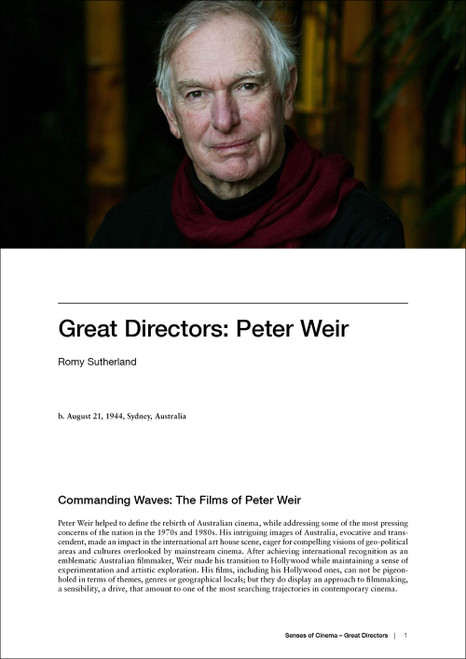Product Overview
Article sample:
Sofia Coppola is a visually stylish film director. Undoubtedly, her self-confessed predilection for aesthetically pleasing fashion, photography and art has largely contributed to the appealing form of her work. Indeed, one cannot overlook the self-conscious beauty of her films: sensuality becomes an all-important part of the viewing process and Coppola purposefully forces her viewers to feel and not merely passively watch her work. The plethora of pastel colours, languid camera movements and resolutely modern soundtracks has all become a recognisable and integral part of the director's stylistic approach. However, the seductive manner of Coppola's audio-visual style has led some to question whether there is any substance below this veneer or not; in fact, critics were polarised over this very issue in response to her most recent film, Marie Antoinette (2006) which purportedly demonstrated her flair for ostentation at the expense of a coolly analytical approach to history. Yet, a closer examination of the subject matter of her work reveals a fundamental link between form and content to the extent that one cannot be separated from the other. Hence, if Coppola's subject matter is the social mores of an elite class, her approach demands that she match this extravagance in the film's very construction. In this context, reprimanding the director for her seeming interest in mere frippery is, as Pam Cook recently put it, 'to miss the point'. Whilst her considered approach to mise en scène (that always starts with a collection of visual images and a compilation soundtrack) creates an affecting and primarily visual style, often at the expense of extended dialogue, this same style also serves to cover, but only partially so, the spectre of something dark and insidious. Alongside a recognisable visual approach, Coppola has also demonstrated an interest in liminal situations, rites of passage and marginal groups of people.
About Senses of Cinema:
Senses of Cinema is an online journal devoted to the serious and eclectic discussion of cinema. We believe cinema is an art that can take many forms, from the industrially-produced blockbuster to the hand-crafted experimental work; we also aim to encourage awareness of the histories of such diverse forms. As an Australian-based journal, we have a special commitment to the regular, wide-ranging analysis and critique of Australian cinema, past and present. Senses of Cinema is primarily concerned with ideas about particular films or bodies of work, but also with the regimes (ideological, economic and so forth) under which films are produced and viewed, and with the more abstract theoretical and philosophical issues raised by film study.







